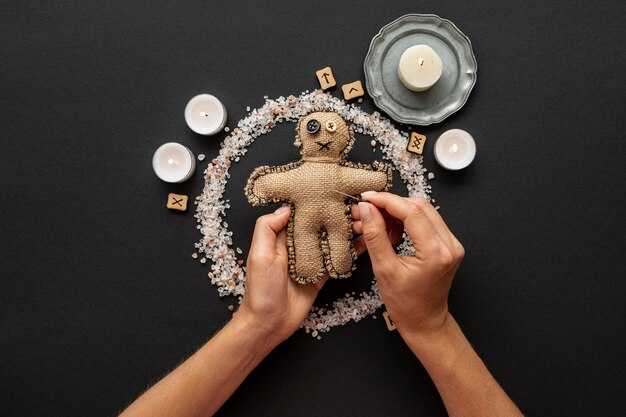One night I was called into the hospital and found a man suffering a massive heart attack. We fought to save him for a long time, tried everything possible, but the damage was too great and he didn’t make it. I stood with the doctor when he had to tell the man’s wife. She came in and stayed there, simply looking at him without a word, without tears. I knew silence doesn’t always mean absence of grief, so I went to her, put my arm around her, and told her I was sorry for her loss. I’ll never forget her answer: “I’m not—I’m sorry? I’m not sorry.” She explained that he had been a terrible man—cruel, proud, and constantly belittling her. He ridiculed her, and his anger had pushed his family away. She said she was all he had left, and despite being married for fifty years, she had spent decades feeling alone. She wasn’t sad that he was gone. Why would she be? She didn’t care about his money, his possessions, or how many people worked for him. When he died, he died alone, because he had driven away everyone who cared about him. That thought breaks my heart, because it could be true for some of you. It breaks my heart because I know how beautiful a healthy, mature, loving relationship can be. It breaks my heart because we all have the chance to enjoy the rewards of a bond built on mutual respect, kindness, and closeness. Most of you want that, and it pains me that some of you will never experience it because you refuse to see the pride, selfishness, or arrogance that will always stand in the way.
This story is painful because it shows how small, repeated behaviors—put-downs, emotional withdrawal, refusal to admit fault—accumulate over years and can destroy connection. If you recognize any of this in your own life, or if someone you love demonstrates these patterns, there are practical steps that can help prevent a similar outcome.
Signs a relationship is becoming or already is toxic
- Frequent belittling, sarcasm, or insults that erode self-worth.
- Controlling behavior: isolating a partner from friends or family, dictating choices.
- Consistent refusal to apologize, minimize responsibility, or blame others.
- Emotional neglect: ignoring feelings, withholding affection as punishment.
- Escalating anger, threats, or intimidation—especially if others have been pushed away.
- A pattern of short-term remorse without real, sustained change.
If you worry you are hurting others
Admitting the problem is the first and most courageous step. Practical steps to begin changing include:
- Take responsibility: practice honest self-reflection and acknowledge specific harmful behaviors.
- Seek professional help: individual therapy, anger-management programs, or behavioral coaching can teach impulse control, empathy, and communication skills.
- Learn repair skills: apologize sincerely, listen without defending, and ask how to make amends. Follow words with consistent actions over time.
- Practice emotional regulation: use time-outs, breathing techniques, and pause before reacting to prevent lashing out.
- Build empathy: intentionally ask about and validate the other person’s experience; practice active listening (reflect back what you heard before responding).
- Rebuild connection slowly: small daily acts of kindness, genuine curiosity, and gratitude statements help restore trust.
If you are the one hurt or afraid
- Prioritize safety and mental health. If you feel threatened, contact local emergency services or a trusted support person.
- Set clear boundaries and communicate them calmly. Boundaries are a healthy way to protect your well-being.
- Seek support: therapy, trusted friends or family, and support groups can validate your feelings and help you plan next steps.
- Remember you are not obligated to repair the relationship alone. Change requires the other person’s sustained effort and humility.
Practical skills to strengthen relationships

- Use “I” statements: describe your feelings and needs without blaming (“I feel hurt when…” rather than “You always…”).
- Schedule regular check-ins to share appreciations and concerns before resentments build.
- Practice gratitude: naming things you appreciate about the other person shifts attention away from negativity.
- Learn conflict resolution: focus on the problem, not the person; brainstorm solutions together and agree on compromises.
- Invest in social connections outside the relationship—friends and family provide perspective and emotional support.
Where to look for help
Consider talking with a licensed therapist (individual or couples work), attending workshops on communication or anger management, or joining peer support groups. If there is emotional or physical abuse, contact local domestic violence resources or crisis lines for guidance and safety planning. Books and courses on communication, empathy, and healthy relationships can supplement professional help—use them as tools, not quick fixes.
Change is possible, but it requires humility, sustained effort, and often outside help. For those who have been hurt, healing and safer, more loving relationships are also possible, even if it means creating distance from people who refuse to change. The real tragedy is not death alone—it is living a life of loneliness and regret when the opportunity for connection existed. You can choose differently today: notice harmful patterns, seek help, practice empathy, and prioritize kindness. Over time, those choices shape whether you leave a life remembered for joy or for the absence of love.
Personal Perspective: Why Relief Replaced Grief
Allow yourself to feel relief without guilt; name the precise reasons for that relief and record them immediately. Set a 10-minute timer and write three factual sentences such as “He posed a consistent threat to my safety,” “I provided daily care for five years,” or “Debt from his addiction forced me to work two jobs.” This brief evidence list reduces shame and converts vague feelings into verifiable causes.
Quantify your context to reduce confusion: research across caregiving populations reports depressive symptoms in roughly 20–50% of long-term caregivers, with higher physical health burdens and sleep disruption than non-caregivers. Prolonged grief disorder appears in about 10% of bereaved adults, rising to around 20–30% after traumatic or violent deaths. Use these ranges to assess whether your experience matches common patterns or needs targeted help.
Relief often replaces acute grief when chronic stress, vigilance, or harm stops. Sustained fear activates the sympathetic nervous system and keeps cortisol high; once the stressor ends, the brain lowers arousal and registers safety, producing relief alongside sadness. Social expectations that only sorrow is acceptable create moral dissonance; labeling both emotions as valid eases that tension.
Take practical steps that stabilize emotion and decision-making: create a private “evidence file” documenting concrete incidents and dates; delay major financial or legal decisions for 30–90 days; schedule three short check-ins with a therapist trained in trauma-focused cognitive behavioral therapy or complicated grief treatment to assess symptoms. Typical therapeutic courses run 12–20 weekly sessions, but a clinician will tailor timing to your needs. For severe insomnia or panic, consult a psychiatrist about short-term medication while therapy proceeds.
Manage social disclosure deliberately: choose two trusted people and say a simple statement such as “I feel relief and confusion; I need a listener, not judgment.” Prepare concise responses for acquaintances to limit repeated explanations. Test one local or online support group and attend three meetings before deciding whether it helps; targeted groups for survivors of abuse or caregiver bereavement often provide more relevant peer validation than general bereavement groups.
Seek urgent help if relief coexists with persistent numbness, intrusive memories, inability to work or care for daily needs beyond six months, or thoughts of self-harm. A formal diagnosis of prolonged grief disorder typically considers a 12-month threshold for adults and requires specialist treatment. Keep records of sleep, appetite, mood swings, and daily functioning for clinical appointments to speed accurate assessment and treatment planning.


 "I’m Not Sad He’s Dead."">
"I’m Not Sad He’s Dead."">

 Give Me 15 Minutes — You’re About to Get Your Life Together">
Give Me 15 Minutes — You’re About to Get Your Life Together">
 You Can’t Shake the Feeling That Everything is TEMPORARY">
You Can’t Shake the Feeling That Everything is TEMPORARY">
 The Final Desperate Move Avoidants Make When They See You Moving On">
The Final Desperate Move Avoidants Make When They See You Moving On">
 Don’t Stonewall the Narcissist.">
Don’t Stonewall the Narcissist.">
 How Trauma Bonds Wreck Your Mental Health">
How Trauma Bonds Wreck Your Mental Health">
 The 5 Shocking Levels of Avoidants in Dating: Which One Are You?">
The 5 Shocking Levels of Avoidants in Dating: Which One Are You?">
 The Final Cruel Trick Avoidants Use Once You Stop Caring (It Cuts Deep)">
The Final Cruel Trick Avoidants Use Once You Stop Caring (It Cuts Deep)">
 These are People Pleaser Problems">
These are People Pleaser Problems">
 How do you know when it’s time to walk away…">
How do you know when it’s time to walk away…">
 "Relationships Die in the Conversations that Never happen"">
"Relationships Die in the Conversations that Never happen"">